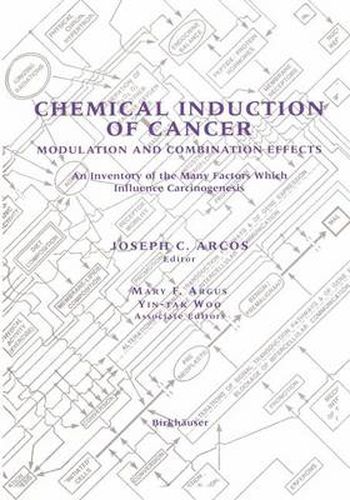Readings Newsletter
Become a Readings Member to make your shopping experience even easier.
Sign in or sign up for free!
You’re not far away from qualifying for FREE standard shipping within Australia
You’ve qualified for FREE standard shipping within Australia
The cart is loading…






This title is printed to order. This book may have been self-published. If so, we cannot guarantee the quality of the content. In the main most books will have gone through the editing process however some may not. We therefore suggest that you be aware of this before ordering this book. If in doubt check either the author or publisher’s details as we are unable to accept any returns unless they are faulty. Please contact us if you have any questions.
This text provides a perspective on the complex aetiology of cancer. The topics are grouped into two parts: Part 1 covers cross-reactions between carcinogens and modification of chemical carcinogenesis by noncarcinogenic agents; Part 2 examines exogenous factors and endogenous biological parameters that modulate chemical carcinogenesis. The chapters in Part 1 discuss: the combination effects between carcinogens (synergism and antagonism); modification of chemical carcinogenesis by inhibitors, promoters and carcinogens; intercellular communication as an interpretive paradigm for the modification of carcinogenesis; mathematical modelling in the evaluation of carcinogen interactions; and a computerized database search and logic system for the assessment of relative carcinogenic potency of chemical mixtures. Chapters in Part 2 discuss: other exogenous as well as endogenous factors that modulate chemical carcinogenesis; immunotoxicity of carcinogens, diet (caloric intake, protein/amino acids, vitamins, minerals and fibre); age of the organism; hormones and modification of the endocrine status; genetic susceptibility; radiations; viruses; stress; and electromagnetic fields. Because of the dominant role that the oncogene concept, signal transduction and tumour-suppressor genes play in the understanding of the mechanism of carcinogenesis, special emphasis is given to the chapter discussing viral-chemical interactions and the molecular biology of viral tumourigenesis.
$9.00 standard shipping within Australia
FREE standard shipping within Australia for orders over $100.00
Express & International shipping calculated at checkout
This title is printed to order. This book may have been self-published. If so, we cannot guarantee the quality of the content. In the main most books will have gone through the editing process however some may not. We therefore suggest that you be aware of this before ordering this book. If in doubt check either the author or publisher’s details as we are unable to accept any returns unless they are faulty. Please contact us if you have any questions.
This text provides a perspective on the complex aetiology of cancer. The topics are grouped into two parts: Part 1 covers cross-reactions between carcinogens and modification of chemical carcinogenesis by noncarcinogenic agents; Part 2 examines exogenous factors and endogenous biological parameters that modulate chemical carcinogenesis. The chapters in Part 1 discuss: the combination effects between carcinogens (synergism and antagonism); modification of chemical carcinogenesis by inhibitors, promoters and carcinogens; intercellular communication as an interpretive paradigm for the modification of carcinogenesis; mathematical modelling in the evaluation of carcinogen interactions; and a computerized database search and logic system for the assessment of relative carcinogenic potency of chemical mixtures. Chapters in Part 2 discuss: other exogenous as well as endogenous factors that modulate chemical carcinogenesis; immunotoxicity of carcinogens, diet (caloric intake, protein/amino acids, vitamins, minerals and fibre); age of the organism; hormones and modification of the endocrine status; genetic susceptibility; radiations; viruses; stress; and electromagnetic fields. Because of the dominant role that the oncogene concept, signal transduction and tumour-suppressor genes play in the understanding of the mechanism of carcinogenesis, special emphasis is given to the chapter discussing viral-chemical interactions and the molecular biology of viral tumourigenesis.